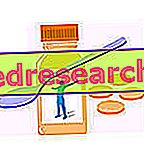Related articles: Epicondylitis
Definition
Epicondylitis, also known as "tennis elbow", is a painful inflammation of the muscles that originate from the humeral epicondyle and the extensor tendons of the forearm.
Despite the name, tennis players are not the only ones to suffer from this disorder: epicondylitis most frequently affects those who carry out work or sport activities that require supination and repetitive and energetic pronation of the forearm. Even sudden strains (eg weight lifting), continuous microtraumatisms and direct damage to the lateral epicondyle (a consequence, for example, of excessive extension of the forearm or incorrect movement) can cause the disorder.
Most common symptoms and signs *
- Elbow pain
- Hand and wrist pain
- Arm pain
- Articolar pains
- Tingling in the right arm
- Tingling in the Left Arm
- Joint swelling
- osteophytes
- Joint stiffness
Further indications
Epicondylitis is the most common cause of pain and swelling located on the outside of the elbow (at the lateral epicondyle) and radiates to the outer surface of the forearm, along the affected muscles, up to the hand. The onset of pain is progressive and increasing. The dominant arm is struck with greater incidence. This symptom is perceived above all when the patient tries to firmly grasp an object with his hand or performs some movements of supination and pronation of the forearm, such as when turning a door handle, opening a jar or, while playing tennis and you perform a backhand shot.
The weakness of the grip during these gestures can be very evident, as the objects tend to slip from the hands. With time, morning stiffness, calcifications, formation of osteophytes on the epicondyle and, more importantly, tendon degeneration can occur.
The diagnosis is mainly clinical. The pain is present at the pressure on the epicondyle and can be evoked by contracting the epicondyloid muscles against resistance with appropriate provocation tests. Instrumental investigations (eg radiography, ultrasound and magnetic resonance) are indicated to exclude other causes of medial pain (internal) at the elbow.
Treatment includes rest, ice, anti-inflammatory drugs and physical therapy. In the forms in which the pain is intense one can benefit from mesotherapy or corticosteroid infiltrations. When the epicondylitis is attenuated, physiotherapy or neuroconnective massage may be indicated.



